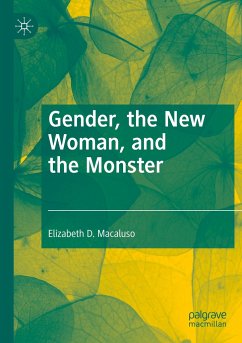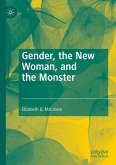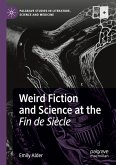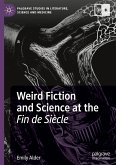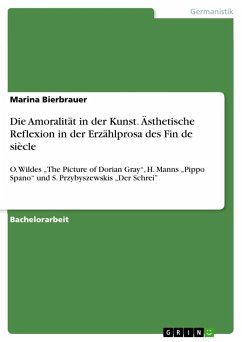This book views late Victorian femininity, the New Woman, and gender through literary representations of the figure of the monster, an appendage to the New Woman. The monster, an aberrant occurrence, performs Brecht's "alienation effect," making strange the world that she inhabits, thereby drawing veiled conclusions about the New Woman and gender at the end of the fin-de-siècle. The monster reveals that New Women loved one another complexly, not just as "friend" or "lover," but both "friend" and "lover." The monster, like the fin-de-siècle British populace, mocked the New Woman's modernity. She was paradoxically viewed as a threat to society and as a role model for women to follow. The tragic suicides of "monstrous" New Women of color suggest that many fin-de-siècle authors, especially female authors, thought that these women should be included in society, not banished to its limits.
This book, the first on the relationship between the figure of the monster and the New Woman, argues that there is hidden complexity to the New Woman. Her sexuality was complicated and could move between categories of sexuality and friendship for late Victorian women, and the way that the fin-de-siècle populace viewed her was just as multifarious. Further, the narratives of her tragedies ironically became narratives that advocated for her survival.
This book, the first on the relationship between the figure of the monster and the New Woman, argues that there is hidden complexity to the New Woman. Her sexuality was complicated and could move between categories of sexuality and friendship for late Victorian women, and the way that the fin-de-siècle populace viewed her was just as multifarious. Further, the narratives of her tragedies ironically became narratives that advocated for her survival.
"Concise, rigorously structured, and accessibly written, this volume's major strength lies in its attention to close reading, supported by Macaluso's illumination of pertinent historical details at the opening of each chapter, serving to contextualize this work." (Eleanor Dobson, Modern Language Review, Vol. 116 (4), October, 2021)
"The book is well organized, and it presents thoughtful and thorough readings of these three novels. ... Gender, the New Woman, and the Monster is an insightful and readable analysis of three significant novels of 1897 and their historical moment, and in it, Macaluso points the way for more such valuable studies of the important and enduring figure of the New Woman." (The Victorian Web, victorianweb.org, November 6, 2020)
"The book is well organized, and it presents thoughtful and thorough readings of these three novels. ... Gender, the New Woman, and the Monster is an insightful and readable analysis of three significant novels of 1897 and their historical moment, and in it, Macaluso points the way for more such valuable studies of the important and enduring figure of the New Woman." (The Victorian Web, victorianweb.org, November 6, 2020)

